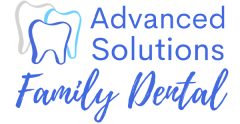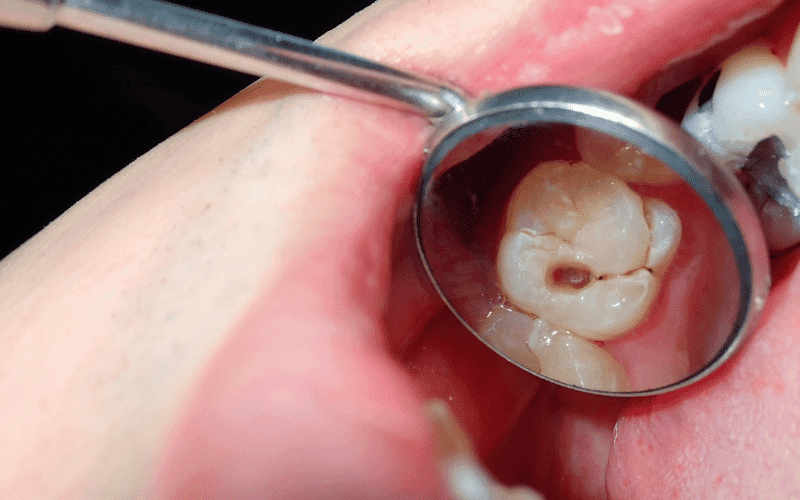Routine dental care is the conductor of our oral health symphony. However, the unexpected crescendos and a question arises: Is a cavity a dental emergency? Consider this blog your guide through the maze of tooth decay urgency.
We’ll discern the subtle notes of caution and reveal the grand overture of symptoms as we peel back the layers of enamel and dig into the heart of dental troubles.
Join us on this journey as we investigate the world where cavities, those seemingly benign gaps, evolve into possible dental dramas, necessitating a search for timely treatments and preserving the harmony of your delicate smile.
The Anatomy Of A Cavity:
Cavities, also known as dental caries or tooth decay, arise when bacteria in the mouth generate acids that erode tooth enamel, causing a hole in the tooth. They are prevalent and can be caught early with frequent dental visits.
Cavities can occur in everyone who has teeth, even newborns. Cavities are classified into three types: smooth surface, root, pit, and fissure. Regular dental care can help detect and avoid dental emergencies caused by cavities.
Causes Of Cavity:
Tooth decay is a common ailment that mainly affects children and adolescents, resulting in tooth loss and, in some cases, a dental emergency. Bacteria in the mouth convert meals, notably sugar and starch, into acids, forming sticky plaque.
Plaque adheres to teeth and is most prevalent on rear molars, gum lines, and filling edges. If left untreated, plaque can harden into tartar, irritate the gums, and cause gingivitis and periodontitis. Within 20 minutes of eating, plaque forms and hardens into tartar.
Plaque acids erode dental enamel, cause cavities, and can result in tooth abscesses or pulp destruction. Carbohydrates, particularly sugars and starches, increase the risk of tooth decay, and frequent eating extends the amount of time acids come into contact with the tooth’s surface.
Signs And Symptoms:
Recognizing the signs and symptoms of a cavity is critical to determining its dental emergency. Mild holes may not show any symptoms, making them simple to miss. Individuals may, however, suffer the following signs as the degradation progresses:
1. Temperature Sensitivity
The presence of a cavity may be indicated by persistent sensitivity after eating hot or cold meals. When your tooth’s enamel begins to wear away, the dentin, the hard tissue layer underlying the enamel, may be damaged.
Dentin is composed of hundreds of tiny hollow tubes. When there isn’t enough enamel to protect the dentin, hot, cold, sticky, or acidic foods may excite the cells and nerves inside your tooth. This is the source of your sensitivity.
2. Toothache:
A persistent acing in one or more of your teeth may suggest the presence of a cavity. One of the most common signs of a hole is discomfort. This soreness might strike unexpectedly or as a result of anything you consume.
This involves soreness and pain in or around your mouth. When you bite down on food, you may experience discomfort and pressure.
3. Tooth Staining:
At first, stains on your teeth may appear as white specks. As the tooth decay continues, the color may get darker. Cavity staining can be brown, black, or white, commonly appearing on the tooth’s surface.
4. Cavity or Hole in Your Teeth:
If the white spot on your tooth, which is the start of a cavity, worsens, you will have a visible hole or pit in your tooth, which you can see in the mirror or feel when running your tongue over the teeth.
Some holes, particularly those between your teeth or notches, are neither visible nor feelable. However, you may still have disco fort or sensitivity in the cavity area, which can lead to dental emergencies.
These indicators, incredibly, when intense, may warrant immediate attention.
Is Every Cavity An Emergency?
The severity of a cavity determines its urgency, with mild cavities not requiring immediate attention. Immediate care is needed if a hole produces severe discomfort, impairs tooth structural integrity, or develops problems.
Not seeing a cavity for the first time is not a dental emergency, but it may be if the pain is severe and you cannot wait for an appointment. You should seek quick dental care if you see swelling or pus surrounding the tooth.
Early stages of decay may not be considered a dental emergency, but if addressed, they can lead to more severe problems. Seeking treatment as soon as possible will help cure the early stages of tooth decay and avoid future harm.
Actions To Take:
1. Mild Or No Symptoms:
Schedule a dental appointment for a full inspection and expert cleaning when cavities show minor indicators to address the issue proactively and prevent future problems.
2. Toothache Or Sensitivity:
If you have a headache or sensitivity, rinse your mouth with warm water and floss, and consider using an over-the-counter pain reliever. Consult your dentist immediately for a thorough examination and personalized treatment plan to relieve pain and address the underlying issue.
3. Visible Cavities:
Seek expert dental treatment when apparent cavities or dark stains on your teeth appear. Make an appointment for a thorough examination to establish the degree of the deterioration. Your dentist will prescribe appropriate treatments, such as fillings or other restorative procedures, to maintain the health and integrity of your teeth.
4. Severe Pain Or Complications:
Treat as a dental emergency in situations of significant pain or consequences such as abscess development. Contact your dentist or go to the nearest emergency dental facility immediately. To alleviate the severe discomfort and avoid the aggravation of dental disorders, immediate treatment is required.
Cavities reveal themselves in varied hues on the delicate painting of dental health. Our grins tell distinct stories, from subtle reminders to urgent requests. As this investigation comes to a close, remember that dental attentiveness, periodic check-ups, and prompt answers to symptoms maintain a symphony of oral well-being.
They understand the intricacies, whether a small note or a crescendo of alarm, strengthening us. Let our smiles live on as expressions and as evidence of proactive caring. Navigate dental quandaries with information, take prompt action, and plan a future in which your smile reflects the resilience of well-informed decisions.
If you are suffering from Cavities, you should schedule a dental appointment with Advanced Solutions Family Dental and get an immediate cure!

